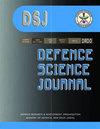Addressing Thermal Distortion in Additive Manufacturing of Topology Optimized Structures Through Reverse Shape Morphing
IF 0.8
4区 工程技术
Q3 MULTIDISCIPLINARY SCIENCES
引用次数: 0
Abstract
Design of light weight structures is an important aspect in the aircraft industry, since minimizing the weightof components improves the overall aircraft performance. However, conventional manufacturing methods work on standard geometries and shapes, and often lead to overdesigning of parts. Additive Manufacturing (AM) overcomes these issues by allowing more design freedom. The present study focuses on two aspects of AM: (1) part consolidation through topology optimization, and (2) addressing thermal distortion through reverse shape morphing. An assembly of two load bearing brackets is first amalgamated into a single Topology Optimized (TO) part, which satisfies the displacement and stress requirements of the original design. After a series of optimization iterations, the final TO part (278 g) weighs 69 % lesser than the original assembled design (909 g), still meeting the design constraints. The TO part thus eliminates the need of fasteners to join both the brackets, thereby, making the design simpler yet effective. Moreover, a homogeneous stress distribution in the optimized part allows for efficient material utilization. In order to overcome thermal distortion that results during the AM process, the shape of the TO part is transformed in a sense opposite to the distortions produced. This is achieved through reverse shape morphing technique, that reduces thermal distortions in the printed part to sub-micron levels, and the morphed TO part conforms to the requirements meeting the design constraints. Therefore, the implementation of topology optimization along with reverse shape morphing makes the design simple and efficient having reduced distortion. This is achieved without any need of modifications in the manufacturing system or equipment, and such a strategy can be replicated and implemented at industrial scale as well.通过反向形状变形解决拓扑优化结构增材制造中的热变形
轻型结构的设计是飞机工业的一个重要方面,因为最小化部件的重量可以提高飞机的整体性能。然而,传统的制造方法适用于标准的几何形状和形状,并且经常导致零件的过度设计。增材制造(AM)通过允许更多的设计自由度来克服这些问题。本研究集中在AM的两个方面:(1)通过拓扑优化进行零件合并,以及(2)通过反向形状变形解决热变形。首先将两个承载支架的组件合并为一个拓扑优化(TO)零件,该零件满足原始设计的位移和应力要求。经过一系列优化迭代,最终TO部件(278 g)的重量比原始组装设计(909 g)轻69%,仍然满足设计限制。因此,TO部分消除了连接两个支架的紧固件的需要,从而使设计更简单而有效。此外,优化部件中的均匀应力分布允许有效的材料利用。为了克服AM过程中产生的热失真,to部分的形状在与产生的失真相反的意义上进行了变换。这是通过反向变形技术实现的,该技术将印刷零件中的热变形降低到亚微米级,变形后的to零件符合满足设计约束的要求。因此,拓扑优化和反向形状变形的实现使得设计简单高效,并减少了失真。这是在不需要对制造系统或设备进行任何修改的情况下实现的,并且这种策略也可以在工业规模上复制和实施。
本文章由计算机程序翻译,如有差异,请以英文原文为准。
求助全文
约1分钟内获得全文
求助全文
来源期刊

Defence Science Journal
综合性期刊-综合性期刊
CiteScore
1.80
自引率
11.10%
发文量
69
审稿时长
7.5 months
期刊介绍:
Defence Science Journal is a peer-reviewed, multidisciplinary research journal in the area of defence science and technology. Journal feature recent progresses made in the field of defence/military support system and new findings/breakthroughs, etc. Major subject fields covered include: aeronautics, armaments, combat vehicles and engineering, biomedical sciences, computer sciences, electronics, material sciences, missiles, naval systems, etc.
 求助内容:
求助内容: 应助结果提醒方式:
应助结果提醒方式:


